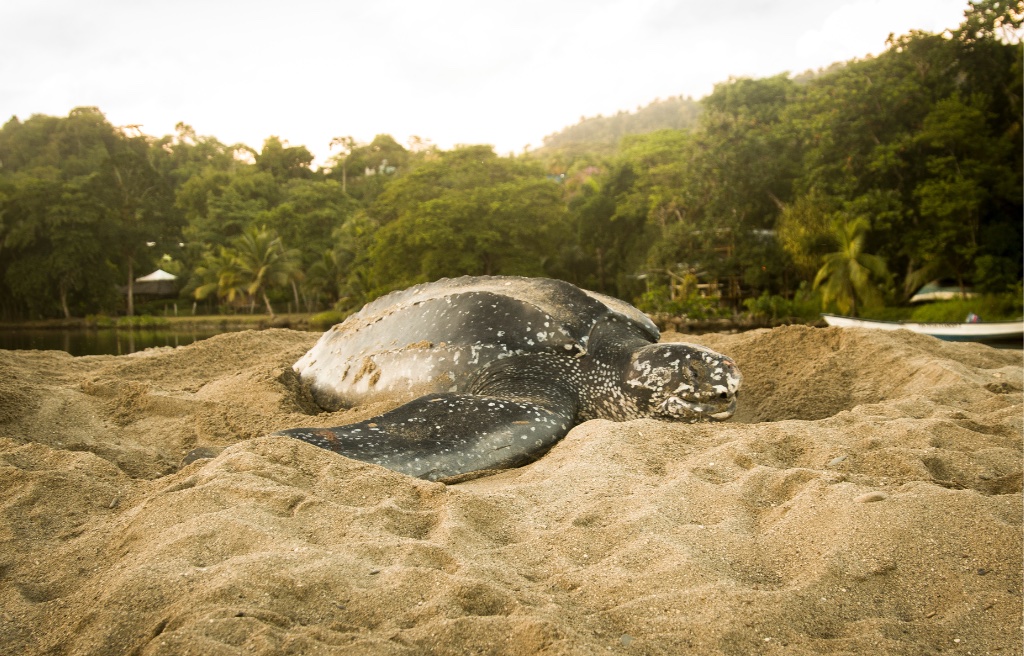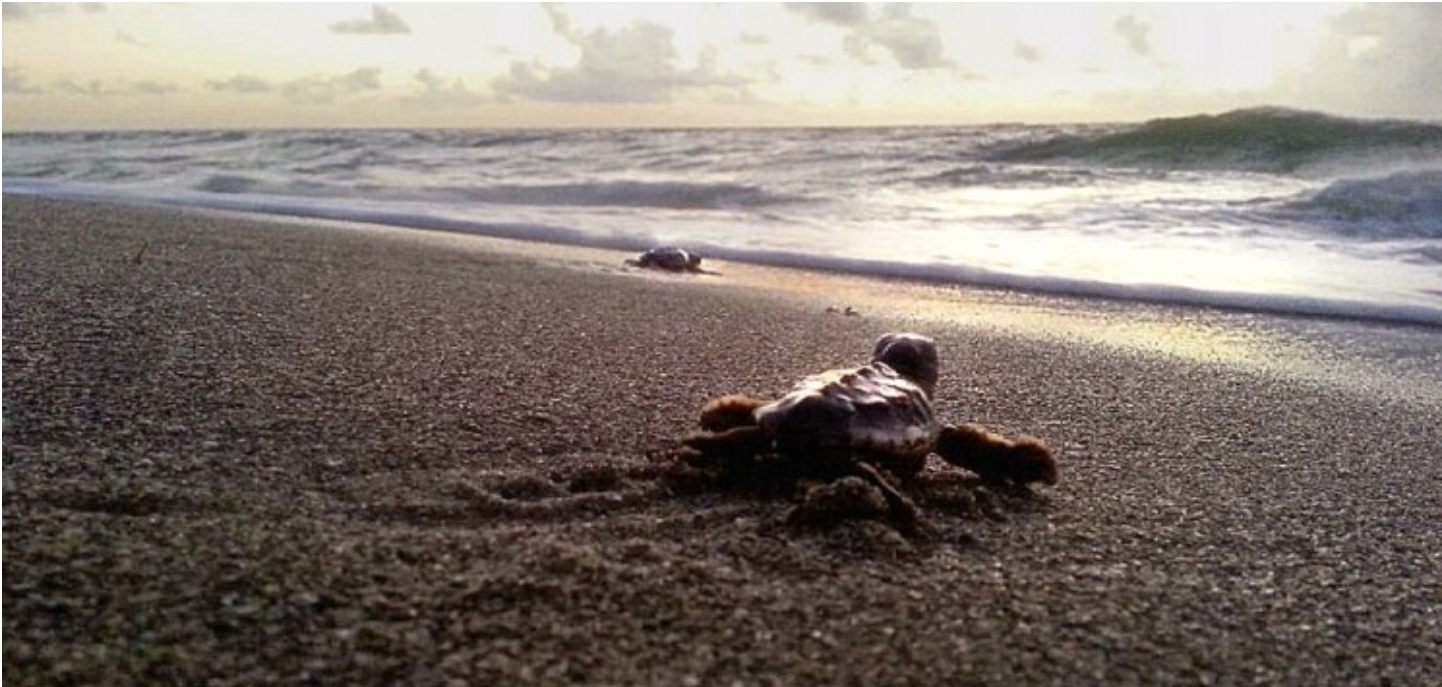
Sea turtles are renowned for their incredible ability to navigate vast oceanic expanses, returning to the very beaches where they hatched to lay their own eggs.
This remarkable phenomenon has captivated the imagination of scientists and conservationists for decades, as the intricate details of this process continue to be unraveled.
Understanding how sea turtles find their nesting beaches is fascinating from a biological perspective and critical for their conservation.
This article will explore the mechanisms behind this astonishing navigation and the ongoing research that sheds light on this captivating journey.

Three turtles found nesting on the beach in Florida, USA
Navigation through Earth’s Magnetic Field
One of the prevailing theories on how sea turtles navigate to their natal beaches is that they employ Earth’s magnetic field as a compass.
Recent studies have suggested that sea turtles possess an innate ability to perceive the Earth’s magnetic field and use it for navigation. While the exact biological mechanisms behind this are still under investigation, it is thought that sea turtles may possess specialized cells or organs that can detect magnetic cues.
The Earth’s magnetic field provides an unchanging reference point as sea turtles navigate through the open ocean. As hatchlings emerge from their nests and begin their journey to the sea, they imprint on the unique magnetic signature of the beach. This imprinting helps them recognize their natal beach when they return to lay eggs as adults.
While this theory is promising, scientists are still working to uncover the precise mechanisms that sea turtles employ to navigate using Earth’s magnetic field.

Navigating by the Stars
In addition to their potential use of Earth’s magnetic field, sea turtles are believed to be proficient at celestial navigation. Hatchlings emerging from their nests during the cover of darkness instinctively head towards the brightest, unobstructed horizon.
For many species of sea turtles, this happens to be the ocean. Their ability to discern the subtle luminescence of the open sea from the darker, obstructed land enables them to find their way to the water.

Hatchling heading towards the ocean
As these hatchlings grow and become adults, it is thought that they may continue to use celestial cues, such as the position of the moon and stars, to assist them in navigating across vast oceanic distances.
While celestial navigation plays a vital role in their journey, the intricate details of how adult sea turtles remember and utilize these cues remain a subject of ongoing research.
Long-Distance Migration
Sea turtles undertake some of the most astonishing long-distance migrations in the animal kingdom. Some species, like the loggerhead turtle, travel thousands of miles from their foraging grounds to their nesting beaches. The precision with which they locate their natal beaches after such extensive migrations is astounding.
Research has suggested that sea turtles rely on a combination of navigational cues. While the magnetic field and celestial navigation play integral roles, the turtles may also employ other sensory cues, including olfaction.
It is believed that they can detect and follow specific scent cues from their natal beach. These complex cues may result from the unique composition of the sand, the microbial communities present, or even the chemical signatures of the vegetation.

Research conducted to understand how sea turtles use magnetic fields by using satellite tagging
Ongoing Research and Conservation Implications
Studying how sea turtles find their nesting beaches is an ongoing process that combines elements of biology, ecology, and oceanography. These remarkable creatures have evolved an intricate navigation system that still elicits curiosity among researchers.
Understanding the mechanisms behind this process is crucial for their conservation.
Conservation efforts often involve protecting not only the nesting beaches themselves but also the routes that sea turtles use to access these sites. Artificial lighting near nesting beaches can disorient hatchlings, causing them to head away from the ocean instead of toward it.
Conservationists work to minimize these disturbances by promoting the use of red or amber lighting, which has a reduced impact on sea turtles.

Red light is used during conservation activities to minimize disruption
(Picture taken by Intern during conservation work in Grenada)
By identifying the cues and sensory abilities that sea turtles use for navigation, scientists and conservationists can develop strategies to enhance the chances of successful nesting.
Understanding these mechanisms can help mitigate the threats these ancient creatures face due to human activities, habitat destruction, and climate change.
Conclusion
The journey of sea turtles from their birthplace to their nesting beaches is a remarkable feat of navigation that continues to inspire awe. While Earth’s magnetic field, celestial navigation, and olfaction are believed to be involved in their remarkable journey, the specifics of this process are still being investigated.
Sea turtle conservation is intrinsically linked to unraveling these mysteries, as understanding how they find their nesting beaches is essential for protecting their populations in a rapidly changing world.




